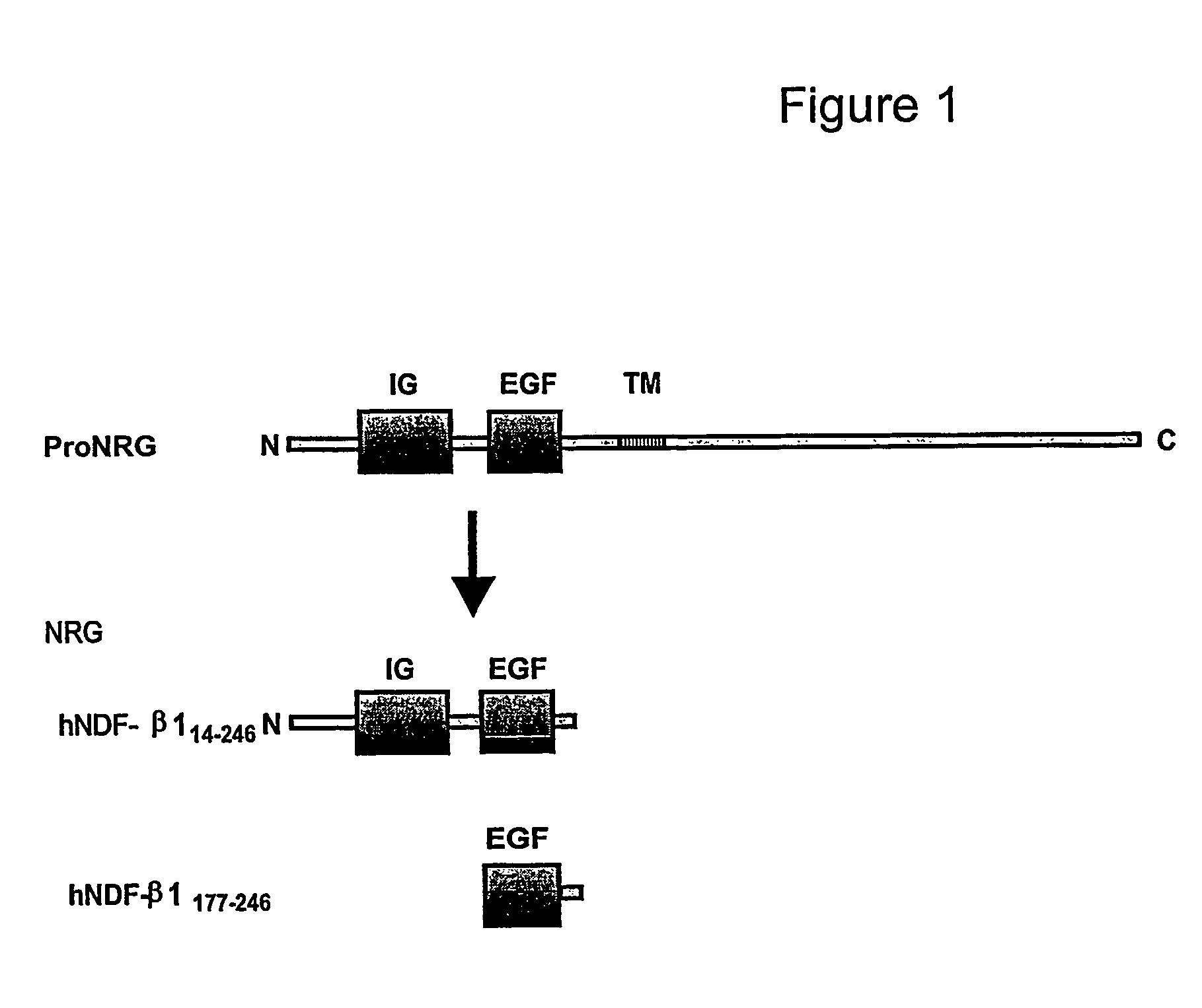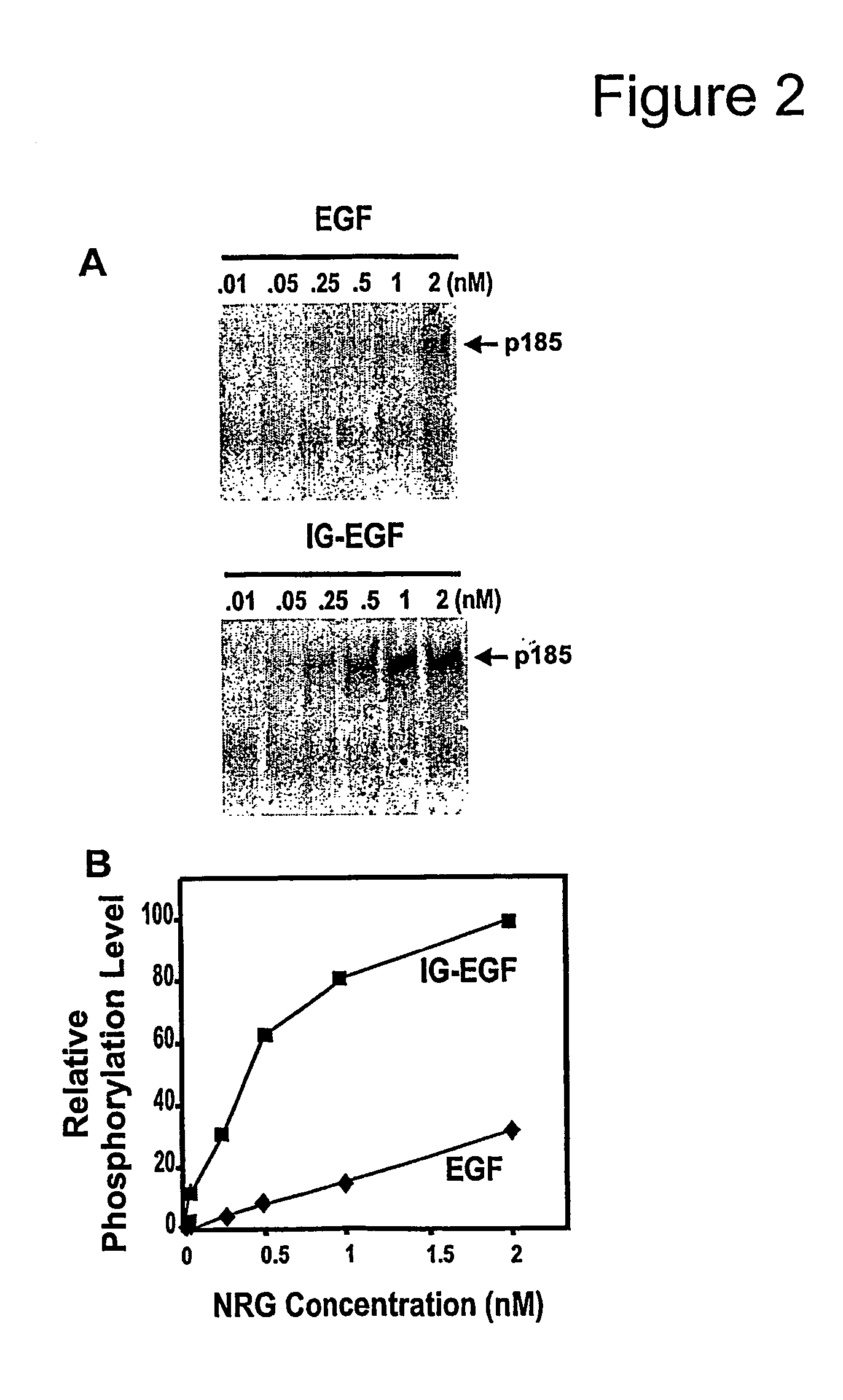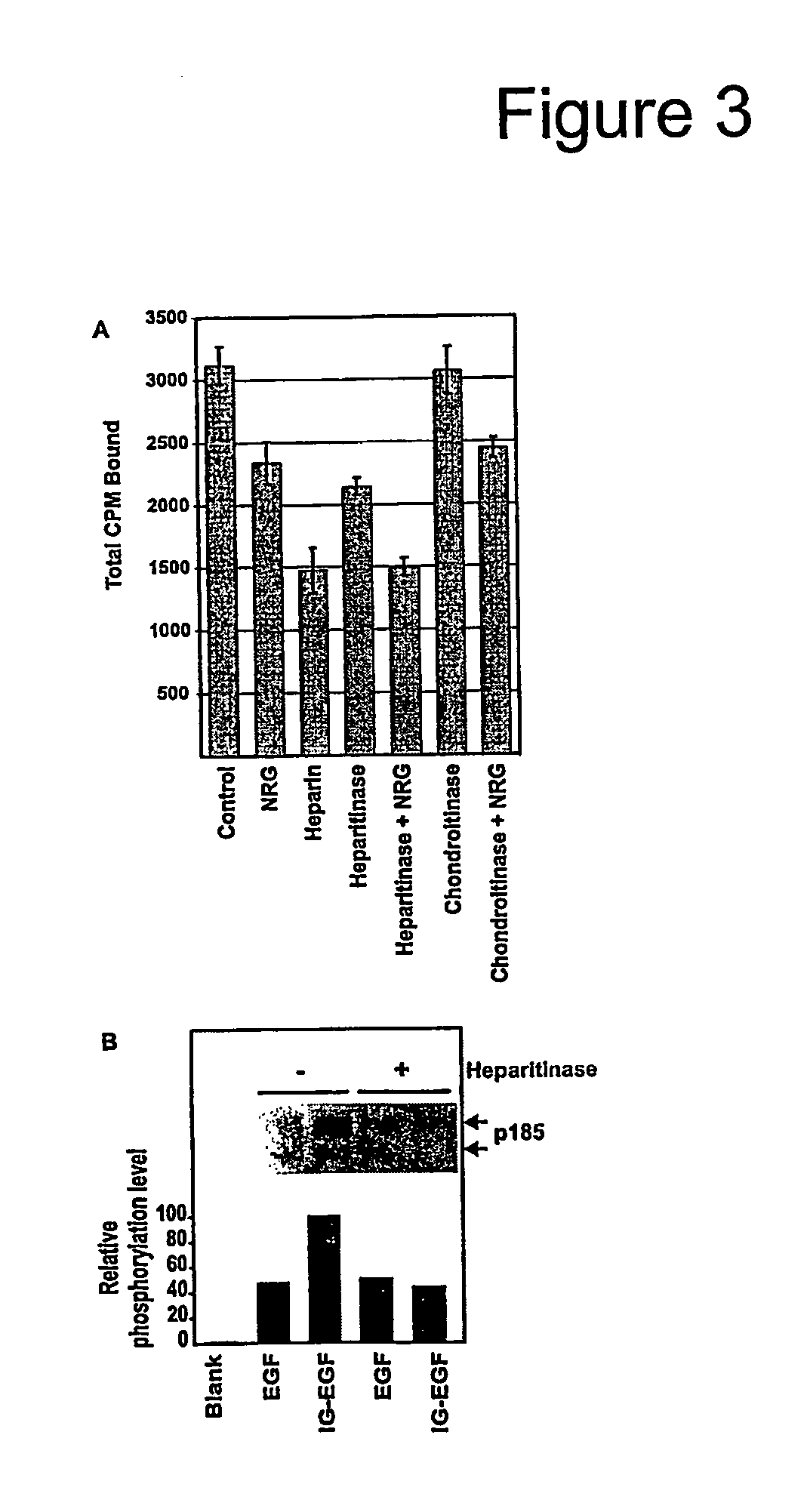Hybrid proteins with neuregulin heparin-binding domain for targeting to heparan sulfate proteoglycans
a proteoglycan and neuregulin technology, applied in the field of biochemistry and neurosciences, to achieve the effect of increasing the biological activity of the ptrg
- Summary
- Abstract
- Description
- Claims
- Application Information
AI Technical Summary
Benefits of technology
Problems solved by technology
Method used
Image
Examples
example i
Experimental Procedures
Reagents
[0237]Recombinant human NRG polypeptides were provided by AMGEN (Thousand Oaks, Calif.). The isolated EGF-like domain corresponds to amino acids 177-246, and the IG-EGF domain corresponds to amino acids 14-246 both of the human β1 form expressed in E. coli (FIG. 1) and used previously (Loeb et al., 1995, supra). Heparin (porcine intestinal mucosa, ˜13,000 Mr) and bovine serum albumin (BSA, Fraction V) were purchased from Sigma Chemical Co. (St. Louis, Mo.). Heparitinase and Chondroitinase ABC were purchased from Seikagaku Corp. (Japan). The tyrosine kinase inhibitor tyrphostin AG1478 was purchased from CalBiochem (La Jolla, Calif.). All other tissue culture reagents were purchased from Invitrogen-Life Technologies (Carlsbad, Calif.).
Chick Myotube Cultures
[0238]Chick myotube cultures from embryonic day 11 pectoral muscle were cultured on 50 μg / ml collagen type I from rat tail (Collaborative Biomedical Products) as described previously (18). 2% CEE media...
example ii
The Neuregulin HBD Increases the Potency of the EGF-Like Domain through HSPG Interactions
[0243]In order to assess the contribution the N-HBD of NRG makes on erbB receptor phosphorylation, we compared the potency of recombinant NRG forms with (IG-EGF) and without (EGF) the N-HBD on primary chick myotube cultures. There are biologically active, recombined NRG Type I β1 isoforms that we have used previously (Loeb et al., 1995, supra (see FIG. 1). Although there are some additional sequences besides the N-HBD on the IG-EGF construct, the heparin-binding portion has been localized to the N-HBD (Meier et al., supra). After treatment with NRG, the erbB receptor complex appeared as a diffuse band at approximately 185 kDa called “p185” that included phosphorylated forms of erbB2, erbB3, and erbB4 on phosphotyrosine western blot. Employing equal molar amounts, the IG-EGF form was 4-fold more potent than the EGF form alone during the 45 minute assay (FIGS. 2A, 2B).
[0244]The present inventor in...
example iii
Soluble Heparin has Different Effects on NRG-Induced Receptor Phosphorylation and Induction of AChR Proteins
[0246]Adding soluble heparin both stimulates and inhibits heparin-binding growth factors. FIG. 3A shows that high concentrations of soluble heparin effectively blocked NRG's ability to bind to its receptor. Studies were done to explore the effects of soluble heparin both in modulating NRG's ability to stimulate erbB receptor phosphorylation and AChR synthesis in cultured myotubes. Whereas heparin had no effect on receptor phosphorylation induced by the EGF-like domain, as little as 5 μg / ml heparin almost completely blocked receptor phosphorylation (p185) with the NRG form containing the N-HBD (FIG. 4A).
[0247]Even though heparin inhibited receptor phosphorylation at all concentrations above 1.0 μg / ml, AChR induction responded to heparin in a biphasic manner. At high concentrations, heparin was inhibitory, while lower concentrations, up to 10 μg / ml, stimulated the rate of appear...
PUM
| Property | Measurement | Unit |
|---|---|---|
| concentrations | aaaaa | aaaaa |
| time | aaaaa | aaaaa |
| volumes | aaaaa | aaaaa |
Abstract
Description
Claims
Application Information
 Login to View More
Login to View More - R&D
- Intellectual Property
- Life Sciences
- Materials
- Tech Scout
- Unparalleled Data Quality
- Higher Quality Content
- 60% Fewer Hallucinations
Browse by: Latest US Patents, China's latest patents, Technical Efficacy Thesaurus, Application Domain, Technology Topic, Popular Technical Reports.
© 2025 PatSnap. All rights reserved.Legal|Privacy policy|Modern Slavery Act Transparency Statement|Sitemap|About US| Contact US: help@patsnap.com



